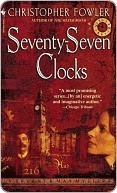The Portable Veblen by Elizabeth McKenzie: A review

This book was published just over five years ago but somehow it only came to my attention recently. I'm glad that it finally found me because it was an absolute joy to read. The title of the book might lead you to think that it is about iconoclastic sociologist/economist Thorstein Veblen (1857 - 1929) if indeed you had ever heard of him. Those of you who have ever had an introductory course in sociology as I did long ago will no doubt remember him as the coiner of phrases like "conspicuous consumption" and the author of the book The Theory of the Leisure Class . He had considerable influence on later economists like John Kenneth Galbraith. He also had influence on Melanie, the mother of our protagonist here. She named her daughter Veblen after Thorstein who was a distant relative. Our Veblen is a thirty-year-old woman living in Palo Alto, California in an old cottage that she has rescued and renovated. Veblen describes herself as a "freelance self." She never ...


















